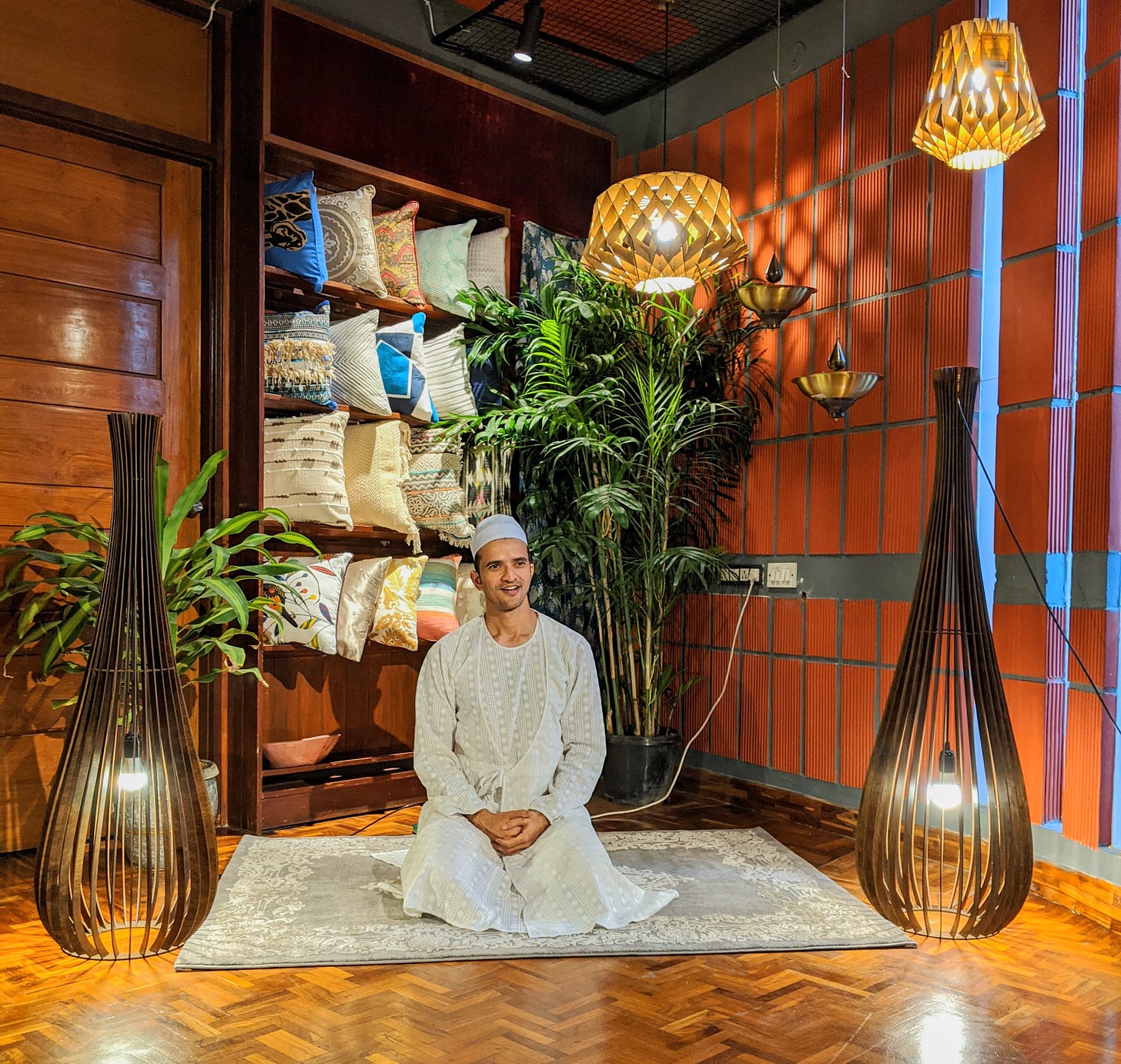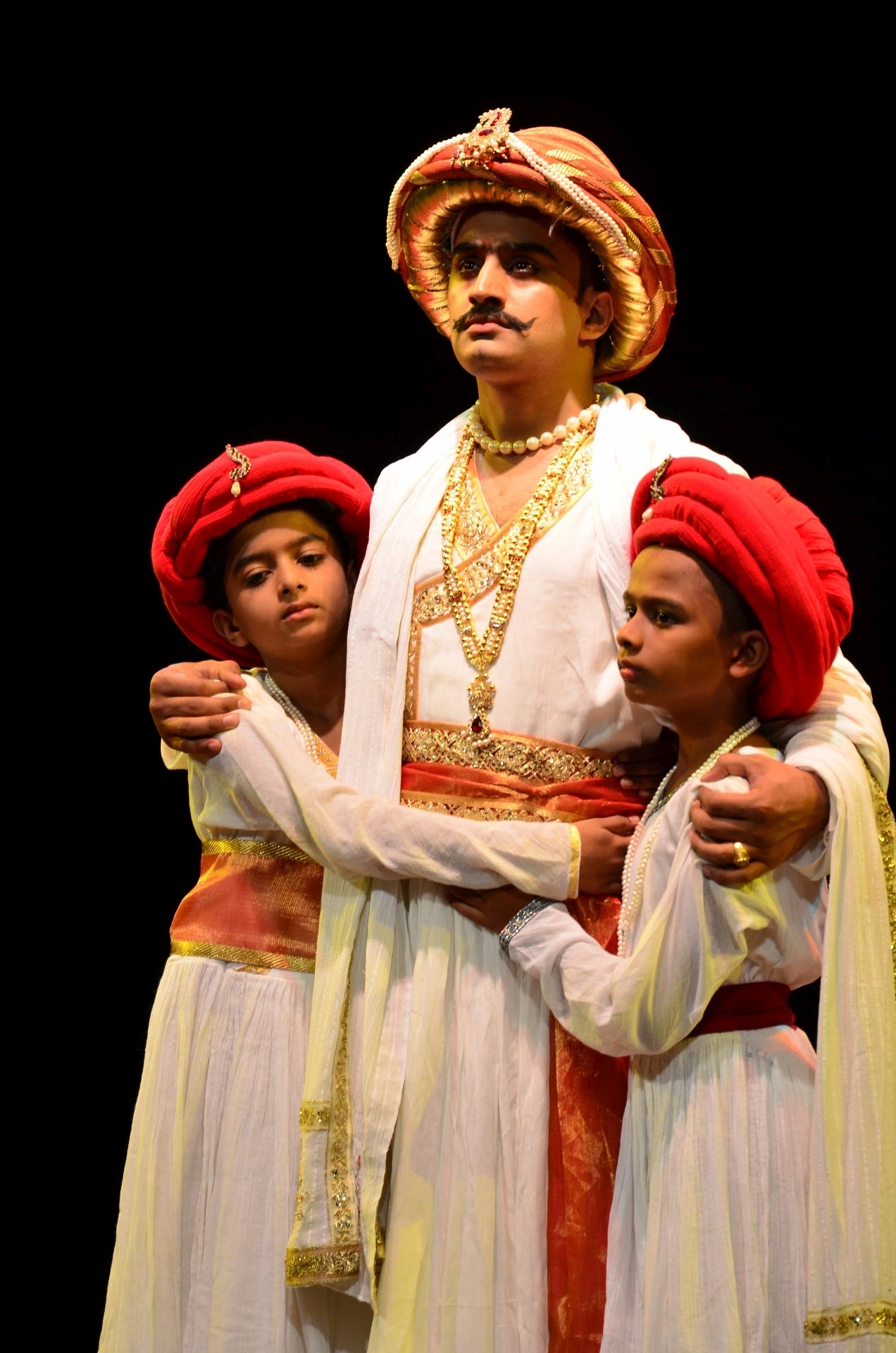I set out to explore Bengaluru's connect with Urdu - Part I
My journey through the past, present and future of Urdu language in Bengaluru

Kafeel Jafri during a Dastangoi performance
“Her lips were painted black, she wore distressed denims, her navel was pierced and I had just finished counting about 14 tattoos on her left arm. While I chastised myself for counting her tattoos instead of focussing on Faiz Ahmed Faiz’s poetry that was being beautifully narrated by the artiste; I couldn’t fathom what a girl who looked like she belonged at a Coachella festival was doing at a cramped up cafeteria in Kormangala. I stayed back after the performance to chat up with her. When she revealed that ‘mujh se pahlī sī mohabbat mere mahbūb na maañg’ was her favourite Faiz poem, I kicked myself in the head for being so ignorant and judgmental. This was back in 2017, today, thankfully, she has forgiven me and we are great friends,” reveals Rafia Jafri when I ask her what her first ‘cultural encounter with Urdu language’ was in Bengaluru. Rafia now works as an Urdu community manager for Bengaluru-based startup called Pratilipi.
It was a chance encounter on Facebook that connected me to Rafia. I was looking for someone to help me translate my grandfather’s Urdu writings that I had recently discovered. Over time, Rafia introduced me to the burgeoning Urdu cultural scene in Namma Bengaluru. I was pleasantly surprised when I attended a ‘musical-docu-recital’ on Mirza Ghalib’s life titled ‘Mera Salaam Kahiyo’ organised by Quiver Productions (a city-based production house that often organises Urdu-based events) at Alliance Française de Bangalore. The hall was packed and the audience couldn’t stop waah-waah-ing throughout the one-and-a-half hour performance.
I knew that Bengaluru had, in fact, embraced Urdu language whole heartedly and set off to explore this magical connect further.
The Historical Connect
My first instinct was to determine the historical connect between Bengaluru and Urdu language. It’s interesting to note that Urdu is the second most-widely spoken language in Karnataka.
Dakhni in Bengaluru lacks the prestige it holds in Hyderabad, something that has a conspicuous effect on the way Dakhni speakers choose to use their language in public.
The form of Urdu spoken here is referred to as Dakhni. In Bengaluru, specifically, it is referred to as Banglori Urdu. Karthik Malli, a Bengaluru-based communications professional, shares in one of his articles online that not being the lingua franca in the city, Dakhni in Bengaluru lacks the prestige it holds in Hyderabad, something that has a conspicuous effect on the way Dakhni speakers choose to use their language in public.

Zafer Mohiuddin’s famous play Tipu Sultan Ke Khwaab uses Dakhni
Speakers in Bengaluru often choose to moderate the ‘thickness’ of their Dakhni, adapting it to a form closer to standard Urdu while interacting with people from other communities, especially north Indian speakers of Hindi. Dakhni Urdu hasn’t found much representation culturally in the city, with a few exceptions like the stage play called Tipu Sultan Ke Khwaab performed by Bengaluru’s famous theatre personality, Zafer Mohiuddin. “I was blown away when I saw Zafer’s performance at Ranga Shankara auditorium and the use of Dakhni language throughout the play,” says Kafeel Jafri, another prominent name in the Bengaluru theatre scene. “His play ripped apart the notion that Dakhini is an impure form of Urdu and rightly so because the idea of supremacy in languages is an obsolete one. Inspired by him, I now want to stage a Dastangoi performance completely in Dakhni in Bengaluru.”
Dastangoi, the lost art form of Urdu storytelling
Kafeel is also the only performer of Dastangoi in the city. Dastangoi is the lost art form of storytelling in Urdu, performed by either one or two people, that originated in pre-Islamic Arabia in the 13th century, and was extremely popular among the elites and commoners of Delhi and Lucknow. Some of his popular Dastangoi performances include Dastan-e-Ameer Hamza and Dastan Yusuf Aur Zulekha Ki. Though the main characters of such stories are Arab, Dastangos like Kafeel make the experience rather unique by incorporating local languages, anecdotes and characters.
Kafeel fondly remembers his 2016 Dastaan-e-Bharatnatyam performance for which he collaborated with renowned Bharatnatyam dancer Kumudha Bharat Ram to narrate the story of Sita. “The South Indian classical dance form from the 3rd century BCE mingled with the unique 13th century Urdu story-telling tradition beautifully! Only in a city like Bengaluru would the crowd love such a unique coming together of two distinct art forms and make it a roaring success,” he reminisces.
Part II will be released tomorrow. Meanwhile, if you liked the article, you can share it by clicking here:




